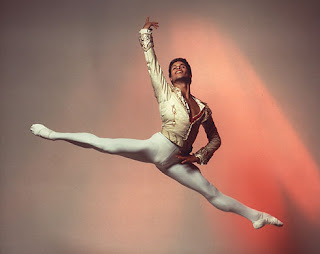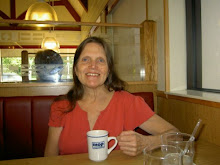First, you've got to be lucky enough to be born Estonian. Second, you must try to be born into the incomparable Anto family. Third, you must grow up hearing the most beautiful, heart-lifting, inspiring, toe-tapping music in the world, played on the most beautiful instrument that exists, the accordion. Fourth, this music must be played by those also lucky enough to be born Estonian. This is the circle of fourths, accordion version, or the time signature for the polka. Those who -- through no fault of their own -- cannot experience step two, can do the waltz, which is just as fine.
There are no better people in the world. The hospitality and friendship of these brothers was legendary. Our family get-togethers were unparalleled in fun, music, and good eating (boy, could the Anto wives and sister cook!!!). My cousins and I had the best childhood a kid could have.
We assembled often throughout the year, for birthdays and anniversaries, barbecues at home and at Jones Beach (in the early 50's it was at Orchard Beach), and, of course, for Christmas. Uncle Ardi was the only brother who read music -- he had taught himself -- and led the brothers into Latin and Italian music as he discovered different pieces. He used the sheet music to learn, his brothers took his lead and filled in with harmonies, duets and trios, and the house rang with rhythms that encouraged movement and song.
My twin cousins, Heino's sons John and Heino, became piano virtuosos (while I was an ordinary piano student during the same years) and a big part of the entertainment at each family party (such entertainment was the very lifeblood of our being together and went on for several hours). They could pick up anything and play along.
With only one piano, the other twin would sit at the bongos and I sometimes rounded out the action with the maracas. This was NOT Estonian music! Our native genre got addressed also as singalongs erupted toward the end of the evening, but the Anto accordions had evolved.
Our parties lasted well into the wee hours, with plenty of food and drink always on hand (two of the brothers and my aunt's husband had basements with built-in bars, ever popular in the 60s) and my dad always drove home with a little buzz on.
Sometimes the family get-togethers were in the apartments of the brothers who did not live in houses, or at my grandparents' small walkup. I am always awed when I think of how many people could comfortably fit into those 2-bedroom flats and have a hearty party.
 The food would be a groaning board of delectables laid out on the kitchen table, the coats were thrown on the beds, there was only one bathroom, and all of us gathered in either the living room or around the kitchen table. In my twin cousins' parents' apartment, there were two pianos in the living room, a spinet and a baby grand! We had a ball growing up in that nurturing atmosphere, where the aunts and uncles made us feel important and loved and the music never stopped.
The food would be a groaning board of delectables laid out on the kitchen table, the coats were thrown on the beds, there was only one bathroom, and all of us gathered in either the living room or around the kitchen table. In my twin cousins' parents' apartment, there were two pianos in the living room, a spinet and a baby grand! We had a ball growing up in that nurturing atmosphere, where the aunts and uncles made us feel important and loved and the music never stopped.Those years have given me memories to fill my mind when I need to go back to the simple times when life held no worries (at least not for us kids) and when the most exciting thing to see was your uncle's car rounding the bend onto your street. Long live the accordion! It is the one thing that centers me as it unfolds memories of my past. When I hear a familiar song played the way my father or uncles played it, tears come to my eyes and I get a lump in my throat.
 |
| One of the best-known and beloved Estonian accordion players in Toronto, Lembit Nieländer. |
He reminds me so much of my father and I am very happy to count him among my friends. I've heard him play since he was a teenager (he accompanied the folk dance lessons I taught at summer camp back in 1974) and, like all the best accordion players, it was clear even then that he was born to it. Today he is on call for all kinds of social events and it is a fortunate person who gets to dance and sing to his playing.
"He makes me feel like dancing...."
This first fellow plays something that may be familiar to ABT and Paul Taylor fans. It was a family staple for me. I don't have any videos of my dad and brothers playing -- so sad. It was before the time of video recorders. I like this white-haired accordion player I found on youtube and am sure his family thinks he is as wonderful as I think the Anto brothers are. I love his little smile at the end, after he finishes playing.
From one to a a whole group of accordions to give you the flavor of what gatherings in our family were like.





































